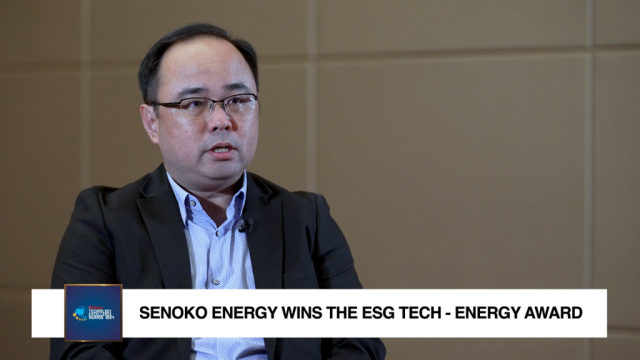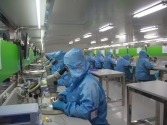
OCBC 2009 profit up 12% on non-interest income surge
37% growth in non-interest income together with lower cost-to-income ratio helped lender earn S$1,962mln.
OCBC Group achieved a resilient set of results for the financial year ended 31 December 2009, amid challenging operating conditions arising from the global financial crisis. Group net profit grew by 12% to S$1,962 million, while growth in terms of core earnings was significantly higher at 32%, after adjusting for the one-off divestment gains and tax refunds of S$263 million in the 2008 reported earnings. Operating profit before allowances increased 26% to S$3,019 million, underpinned by a recovery in insurance income and strong trading results which lifted non-interest income by 37%, as well as a 3% reduction in operating expenses as a result of disciplined cost management. Prudent risk management and active portfolio reviews helped to contain credit costs at a slightly lower level than 2008. The Group’s non-performing loans (NPL) ratio peaked in the second quarter, and improved to 1.7% by year-end.
For the fourth quarter of 2009 (“4Q09”), net profit rose 67% year-on-year to S$502 million. Excluding the S$51 million tax refunds in 4Q08, core net profit grew 101%, contributed by significantly stronger non-interest income and reduced allowances. Compared to 3Q09, net profit was 12% higher, as the previous quarter included the effect of a S$213 million loss (S$154 million after tax and minority interests) from the redemption offer of GreatLink Choice (GLC) policies by subsidiary Great Eastern Holdings (GEH). The non-recurrence of this item was partly offset by lower underlying insurance income following an exceptionally strong performance in the third quarter.
Return on equity, based on core earnings, improved to 12.2% in 2009, from 9.9% in 2008. Core earnings per share for the year rose 29% to 59.4 cents. A final tax-exempt dividend of 14 cents per share has been proposed, bringing the full year 2009 dividend to 28 cents per share, unchanged from 2008. The dividend payout of 46% of core earnings is in line with the Group’s target minimum of 45%. Similar to the previous two dividend payments, shareholders will be given an option to receive the final dividend in the form of shares, the issue price of which will be set at a 10% discount to the average closing share price during the price determination period (ex-dividend date to books closure date, both dates inclusive).
Net interest income for the year grew 2% to S$2,825 million, contributed by growth in interest-earning assets, as net interest margin narrowed by 4 basis points to 2.23%. Loans declined during the first nine months of the year, but grew 5% during the fourth quarter. For the full year, loans edged up 1%, with growth in the housing, commerce and transport sectors largely offset by declines in other sectors.
For 4Q09, net interest income declined 12% year-on-year to S$687 million, largely because of a significant reduction in gapping income and the effects of sustained low interest rates on asset yields. Net interest margin was 2.08%, down from 2.47% in 4Q08 which was a multi-year high. Compared to 3Q09, net interest income was largely unchanged, and net interest margin was lower by 8 basis points.
Non-interest income rose 37% (excluding the divestment gains in 2008) to S$1,990 million in 2009, driven by higher insurance profits and net trading income. Life assurance profits more than doubled from S$300 million to S$727 million, contributed by higher profit from the Non-Participating Fund as credit spreads tightened and equity markets recovered. The life assurance profits also included a non-recurring gain of S$201 million in 1Q09 arising mainly from the adoption of the new Risk Based Capital framework in Malaysia. This gain was largely offset by the GLC-related loss of S$213 million in 3Q09 (classified under “other income”). The two items combined had no significant impact on the Group’s non-interest income, and on earnings contribution from GEH, for the full year.
Net trading income recovered strongly from S$43 million in 2008 to S$344 million in 2009, led by gains in foreign exchange income and securities trading. Fee and commission income however fell 6% to S$730 million, as lower wealth management, fund management and credit card income offset the growth in stockbroking and loan-related income.
For 4Q09, non-interest income rose 92% year-on-year to S$497 million, contributed by trading and investment gains as compared to losses a year ago, and a 20% increase in fee and commission income. Compared to 3Q09 which was impacted by the GLC loss, non-interest income was 27% higher. Fee and commission income increased by 2%, while life assurance profits fell 39% following an exceptionally strong performance in the previous quarter.
Operating expenses for the year declined by 3% to S$1,796 million as the Group maintained a disciplined approach to cost control. Staff costs fell 5% as a result of lower recruitment costs and commission allowances, tighter control on headcount and salary increases, and the cash grants received from the Singapore government’s Jobs Credit Scheme. Other operating expenses also declined by 4%. 4Q09 operating expenses were little changed compared to a year ago as well as the previous quarter. The cost-to-income ratio was 37.3% in 2009, down from 43.7% in 2008.
Net allowances for loans and other assets amounted to S$429 million, down slightly from S$447 million in 2008. Higher specific loan allowances were offset by lower allowances for other assets, mainly investment securities. Specific loan allowances remained relatively low at 29 basis points of loans in 2009, compared to 21 basis points in 2008. Net allowances for loans and other assets in 4Q09 were S$77 million, well below the S$243 million a year ago, and above the S$52 million in 3Q09.
The Group’s NPL ratio peaked in June 2009 at 2.1%, improving to 1.7% at year-end, which was slightly higher than the 1.5% at end-2008. Absolute NPLs increased by 20% over the year to S$1,417 million, with net increases coming mainly from Malaysia and Indonesia. The Group maintains a strong allowance coverage ratio, with cumulative allowances representing 102% of total non-performing assets (“NPAs”) and 249% of unsecured NPAs. A majority of the NPAs – 52% – were in the substandard category, which tend to be well collateralised and/or have no overdues.
























 Advertise
Advertise










